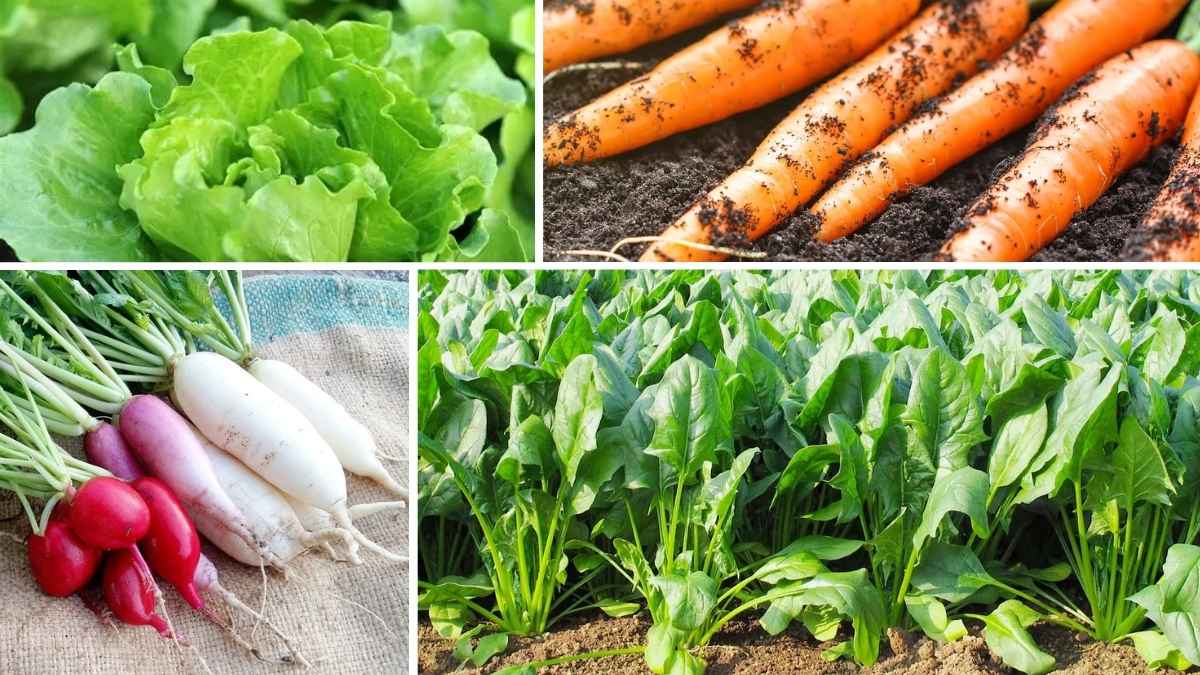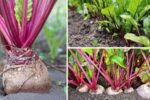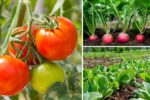Winter might make outdoor gardening difficult, but it offers the perfect opportunity to start an indoor garden. Growing your own vegetables during the cold months is not only rewarding but also provides you with fresh produce right from the comfort of your home. You don’t need a lot of space, and with the right vegetables, indoor gardening can be both easy and enjoyable. Here are seven easy-to-grow winter vegetables that will thrive indoors and ensure you stay connected with nature all year round.
Lettuce: A Quick and Easy Green
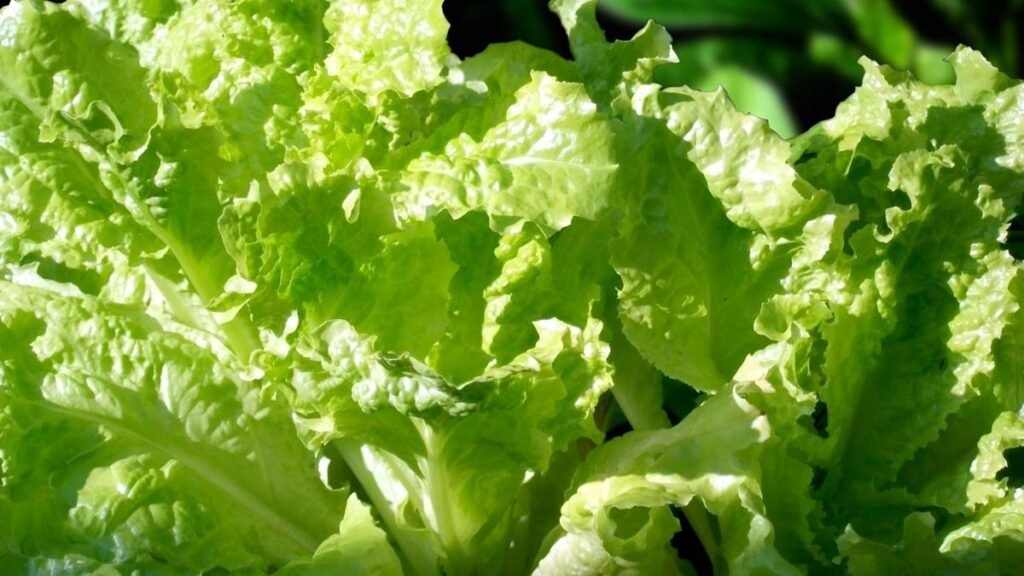
Lettuce is a popular leafy green that grows quickly and is perfect for indoor gardens. It thrives in cooler temperatures, making it a great winter vegetable. Lettuce comes in many varieties, such as romaine, butterhead, and leaf lettuce, all of which are easy to grow indoors. Lettuce is known for its crisp texture and mild flavor, often used in salads or sandwiches.
How to Grow Lettuce
Plant lettuce seeds in shallow containers, ensuring the container has good drainage. Lettuce requires around 4-6 hours of natural sunlight or supplemental grow lights each day. The soil should be kept moist but not waterlogged. Lettuce can be harvested in 3 to 4 weeks, starting with the outer leaves. For continuous growth, cut the outer leaves regularly, allowing the inner leaves to keep growing.
Benefits
Lettuce is rich in vitamins A and K, providing antioxidants that support healthy vision and skin. It’s also low in calories and high in water content, making it an excellent addition to a healthy diet, especially for weight management.
Spinach: A Nutrient-Packed Delight
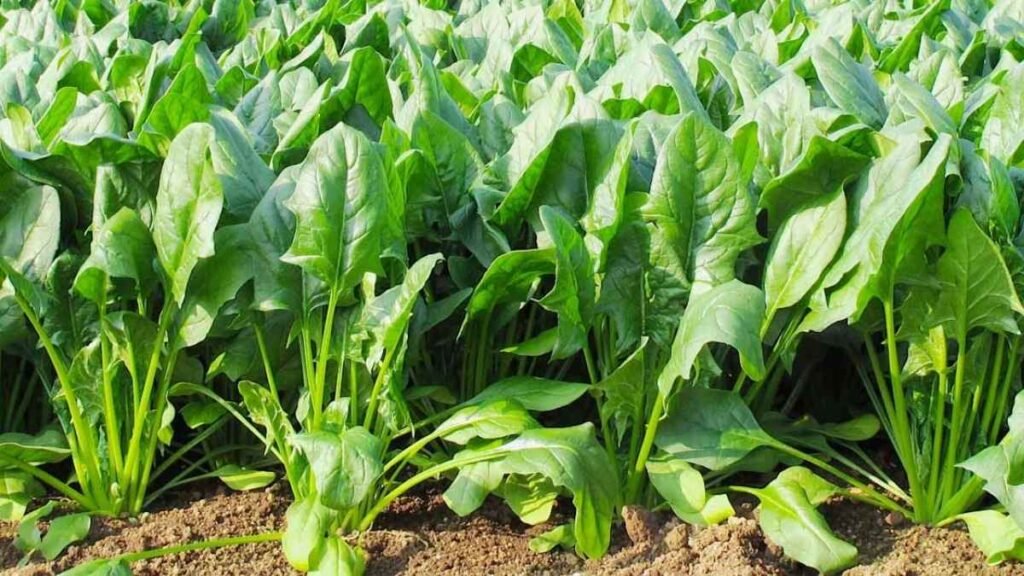
Spinach is a cool-season vegetable that flourishes indoors during winter. Known for its dark green, tender leaves, spinach is packed with essential nutrients like iron, magnesium, and vitamins A and C. It’s great for adding to salads, smoothies, and soups. Growing spinach indoors is relatively simple and requires minimal space, making it perfect for small apartments or homes.
How to Grow Spinach
Spinach grows best in containers that are at least 6 inches deep. Place the container in a sunny spot, ensuring it receives 4 to 6 hours of sunlight daily. The soil should be moist but not soggy, and regular watering is necessary to maintain moisture. You can begin harvesting the outer leaves in about 4 to 6 weeks, leaving the inner leaves to continue growing.
Benefits
Spinach is a powerhouse of nutrients, rich in antioxidants and vitamins that help boost immunity and improve overall health. It’s also known to support bone health due to its high vitamin K content and is a great source of dietary fiber, promoting digestive health.
Radishes: Fast-Growing and Fun
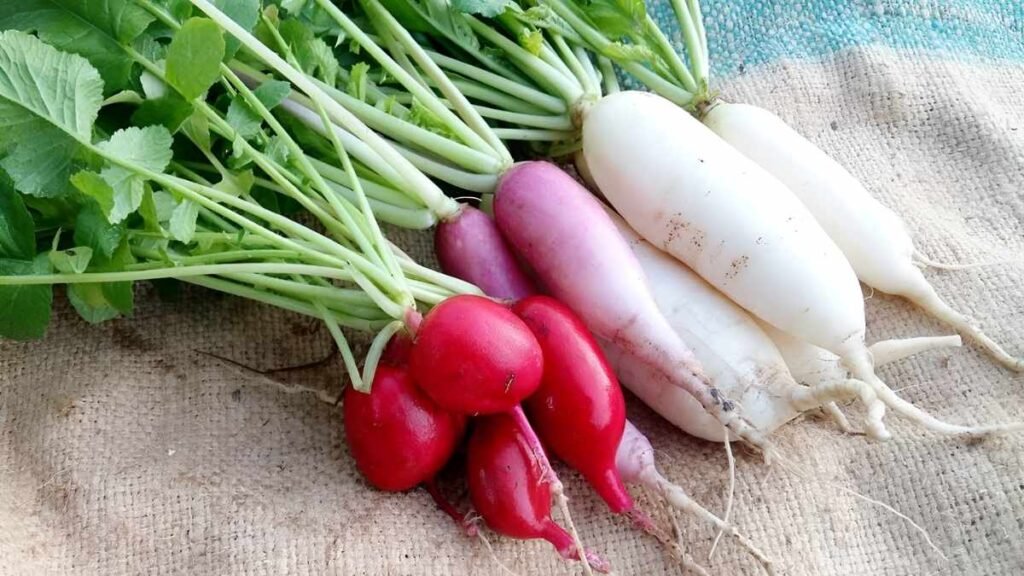
Radishes are one of the fastest-growing vegetables and can be harvested in as little as 3 to 4 weeks. These small, round vegetables come in a variety of colors, including red, purple, and white, and add a peppery crunch to salads. Radishes are perfect for indoor gardens because they don’t require much space and are easy to care for.
How to Grow Radishes
Plant radish seeds in containers that are at least 6 inches deep, with well-draining soil. They need about 4 to 6 hours of sunlight per day to grow successfully. Radishes grow quickly, so water them regularly to keep the soil moist. Thin the seedlings to avoid overcrowding, and harvest them when they reach the desired size.
Benefits
Radishes are low in calories but high in fiber, making them great for digestive health. They are also rich in antioxidants and contain vitamin C, which is essential for boosting the immune system. Additionally, their water content helps with hydration.
Kale: A Superfood for Winter
Kale is a hardy leafy green that thrives in cooler temperatures and is packed with nutrients. It’s one of the most nutritious vegetables, offering high amounts of vitamins A, C, and K, along with iron and calcium. Kale’s slightly bitter flavor can be enjoyed in salads, soups, or even as crispy chips when baked.
How to Grow Kale
Kale needs a container that is at least 12 inches deep to accommodate its deep roots. It requires around 6 hours of sunlight a day. Kale can grow in a variety of soil types but prefers well-draining soil. Keep the soil consistently moist but not soggy. Harvest the outer leaves once they reach maturity, and the plant will continue producing fresh leaves.
Benefits
Kale is considered a superfood because of its impressive nutritional profile. It’s high in fiber, which aids digestion, and contains powerful antioxidants that support heart health. It’s also rich in vitamins that support bone and immune health, making it a great addition to any diet.
Herbs: Perfect for Indoor Gardening
Herbs like basil, parsley, cilantro, thyme, and mint are easy to grow indoors and add vibrant flavors to your cooking. These herbs can grow well in containers on a windowsill or kitchen counter, making them ideal for indoor gardening. Fresh herbs can elevate your meals and provide additional nutrients with minimal space.
How to Grow Herbs Indoors
Choose a container with good drainage for each herb. Most herbs require at least 4 to 6 hours of sunlight per day. Keep the soil well-drained and water them regularly, but be careful not to overwater. If you don’t have enough natural light, consider using grow lights. Harvest leaves as needed, taking care to leave the plant enough to continue growing.
Benefits
Herbs like basil and parsley are rich in antioxidants and contain essential vitamins such as vitamin C and vitamin K. Mint can help with digestion and soothe headaches, while thyme is known for its antibacterial properties, which can support overall health.
Carrots: Indoor-Friendly and Delicious
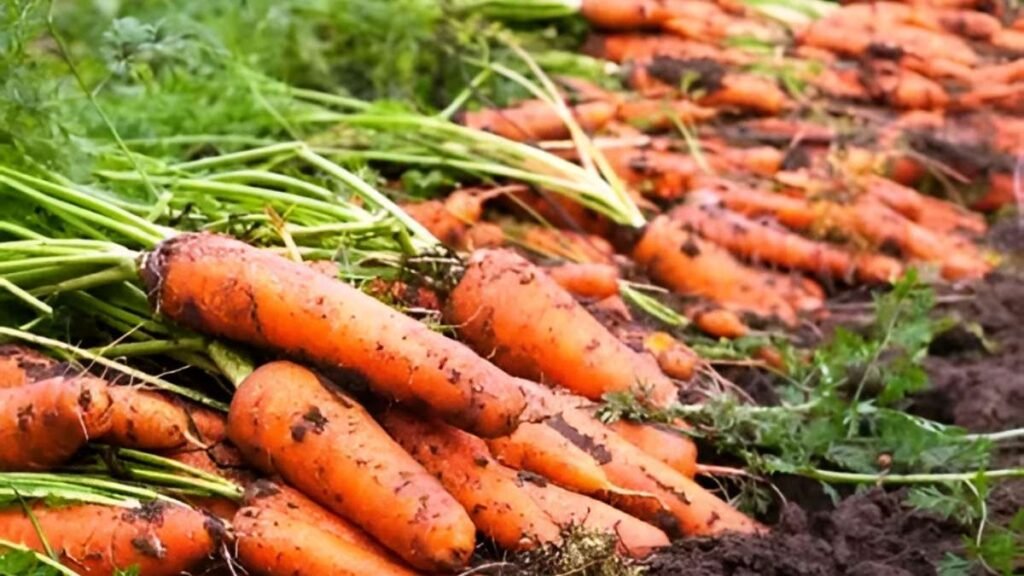
Carrots are root vegetables that grow well indoors, even during the winter. They are perfect for indoor gardening as long as the container is deep enough to accommodate their long roots. Carrots are naturally sweet and crunchy, making them a delicious snack or addition to many dishes.
How to Grow Carrots Indoors
Choose a deep container (at least 10 inches) with well-draining soil. Carrots prefer cooler temperatures, so they are well-suited for winter indoor gardening. Ensure the container is placed in a spot that receives 6 hours of sunlight a day. Water the soil regularly but avoid waterlogging. Thin out the seedlings as they grow to prevent overcrowding, and be patient as it can take 2 to 3 months for carrots to fully mature.
Benefits
Carrots are an excellent source of vitamin A, which supports eye health, and are also rich in antioxidants that help protect against cell damage. They contain fiber, which aids in digestion and promotes a healthy gut, making them a valuable vegetable to include in your diet.
Swiss Chard: A Winter Wonder
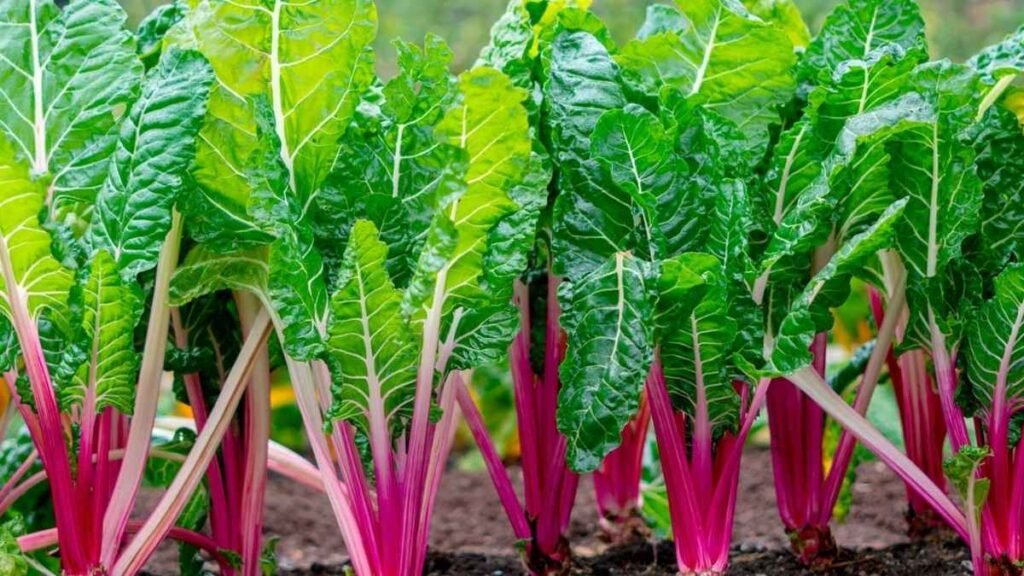
Swiss chard is a colorful leafy green vegetable that grows well indoors, even in cooler conditions. Its vibrant red, yellow, or white stems and dark green leaves make it a visually appealing addition to your garden. Swiss chard is a versatile vegetable that can be used in salads, soups, or sautéed as a side dish.
How to Grow Swiss Chard Indoors
Plant Swiss chard in a container that is at least 8 inches deep, as it has relatively deep roots. Swiss chard needs about 4 to 6 hours of sunlight each day. Water regularly but ensure that the soil is well-drained. You can harvest the outer leaves as they grow, allowing the plant to continue producing fresh leaves throughout the winter.
Benefits
Swiss chard is a powerhouse of nutrients, rich in vitamins A, C, and K, which promote healthy skin, boost the immune system, and support bone health. It is also an excellent source of iron, calcium, and magnesium, making it great for overall health and wellness.
Conclusion
Indoor gardening during the winter months is a rewarding and practical way to grow your own fresh vegetables. Whether you want to grow leafy greens, root vegetables, or herbs, there are many options that thrive indoors. By providing the right care and choosing the right vegetables, you can enjoy a steady supply of fresh, healthy produce, even when it’s cold outside. These seven easy-to-grow winter vegetables offer a wide variety of benefits, from boosting immunity to improving heart health. Happy gardening!

